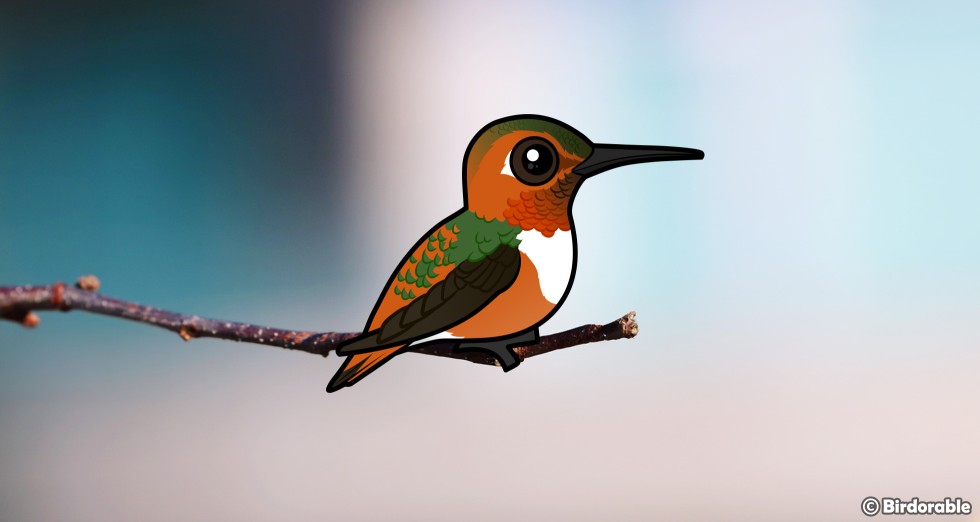Hummingbird Week 2024
Allen's Hummingbird: A Jewel of the California Coast

Today for our Hummingbird Week new bird reveal, we're sharing the Birdorable Allen's Hummingbird!
The Allen's Hummingbird is a small, captivating bird, known for its dazzling colors and remarkable agility. This hummingbird breeds along coastal regions of California and parts of southern Oregon. Despite its petite size, the Allen's Hummingbird boasts a vibrant personality and an array of interesting characteristics that make it a bird-lover's favorite.
One of the most striking features of the Allen's Hummingbird is its brilliant plumage. Adult males are particularly eye-catching with their bright orange-red throat, known as a gorget, and a green back. Their underparts are mostly orange, adding to their fiery appearance. Females and immature males are less vividly colored, sporting greenish-brown backs and white underparts with a sprinkling of rusty hues. This sexual dimorphism is quite common among hummingbirds and plays a role in courtship and mating.
Speaking of courtship, the Allen's Hummingbird has a unique and elaborate display routines to attract mates. During the breeding season, males perform two different types of dramatic displays to attract mates. Shuttle displays involve intimate fly-bys with gorgets flared for maximum visual impact, along with a loud accompanying sound produced by fluttering wings. Dive displays include high-speed fly-bys. These displays are not just about showing off their flying skills, but also about demonstrating their fitness and health to potential mates. The displays may even be directed at other birds -- not just potential mates. The combination of visual and auditory signals makes for an interesting method of attracting attention!
The diet of the Allen's Hummingbird primarily consists of nectar from various flowering plants, which provides them with the energy needed for their high metabolism and active lifestyle. Additionally, they consume small insects and spiders, which supply essential proteins. This diet not only sustains their energetic behavior but also helps them during breeding season, when nutritional needs are higher.
The Allen's Hummingbird is also known for its migratory behavior. While some populations are year-round residents in southern California, especially on off-shore islands, others migrate to Mexico during the winter months. This migration is relatively short compared to other bird species. The coastal habitats they favor provide abundant food resources and suitable nesting sites, making these areas critical for their life cycle.

Allen's Hummingbird by Alan Schmierer (Public Domain)
Although their conservation status is considered to be "Least Concern", Allen's Hummingbirds face several environmental threats. Habitat loss due to urbanization and agriculture is a significant concern, as it reduces the availability of their preferred nesting and feeding sites. Climate change also poses a threat, potentially altering the timing of flower blooming and insect availability, which can affect their food sources. Human activity has been beneficial to the non-migratory population, where year-round blooming trees have been planted.
The Allen's Hummingbird is a remarkable bird that enchants with its vivid colors, agile flight, and fascinating behaviors. This species joins our hummingbird family and becomes the 797th Birdorable!













Comments
Leave a comment
Thank you!